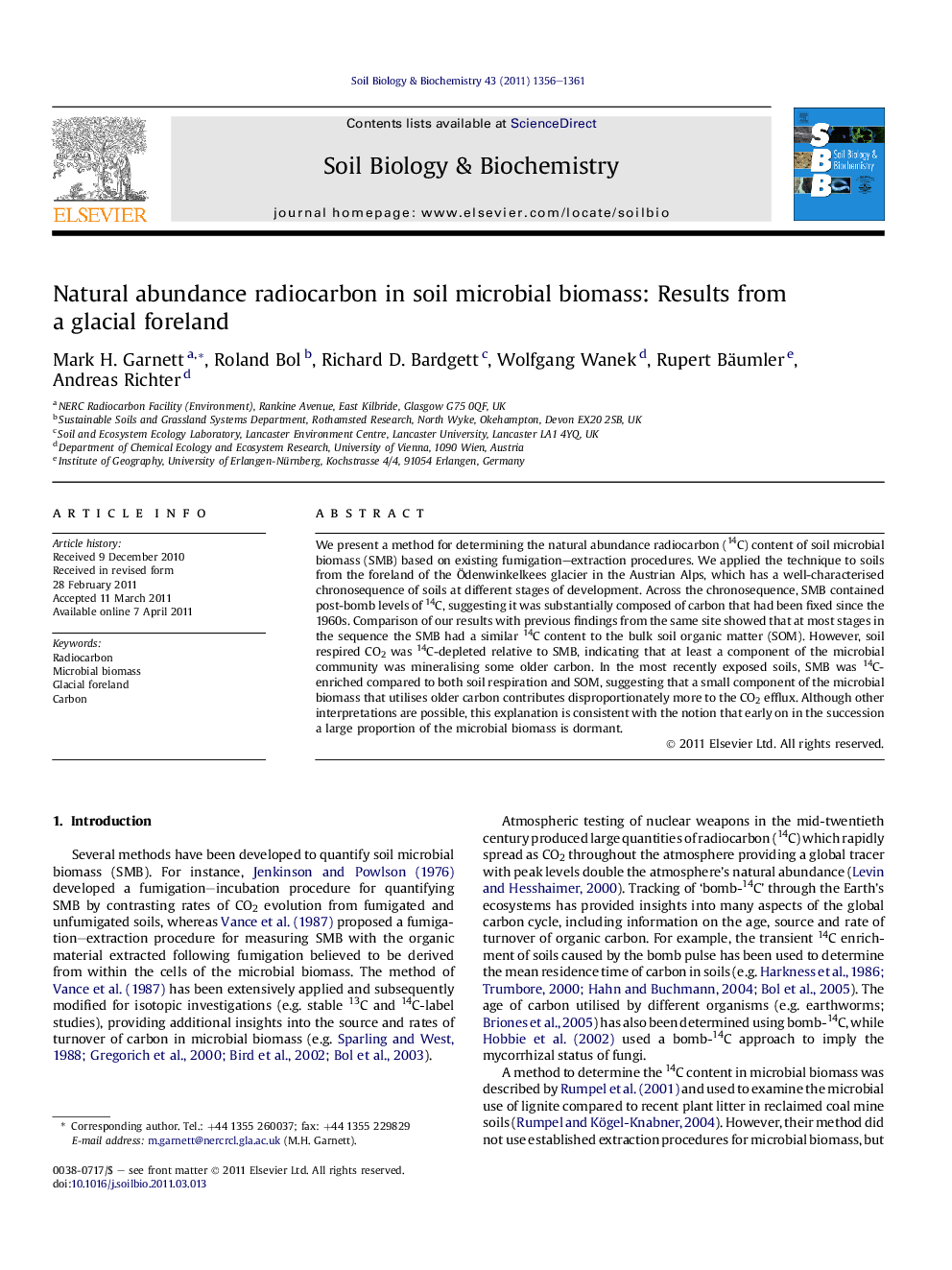| Article ID | Journal | Published Year | Pages | File Type |
|---|---|---|---|---|
| 2025313 | Soil Biology and Biochemistry | 2011 | 6 Pages |
We present a method for determining the natural abundance radiocarbon (14C) content of soil microbial biomass (SMB) based on existing fumigation–extraction procedures. We applied the technique to soils from the foreland of the Ödenwinkelkees glacier in the Austrian Alps, which has a well-characterised chronosequence of soils at different stages of development. Across the chronosequence, SMB contained post-bomb levels of 14C, suggesting it was substantially composed of carbon that had been fixed since the 1960s. Comparison of our results with previous findings from the same site showed that at most stages in the sequence the SMB had a similar 14C content to the bulk soil organic matter (SOM). However, soil respired CO2 was 14C-depleted relative to SMB, indicating that at least a component of the microbial community was mineralising some older carbon. In the most recently exposed soils, SMB was 14C-enriched compared to both soil respiration and SOM, suggesting that a small component of the microbial biomass that utilises older carbon contributes disproportionately more to the CO2 efflux. Although other interpretations are possible, this explanation is consistent with the notion that early on in the succession a large proportion of the microbial biomass is dormant.
► We measured stable- and radiocarbon in microbial biomass from glacial foreland soils. ► Soil microbial biomass in soils of differing age was all dominated by bomb-14C. ► Substantial component of soil microbial biomass derived from recently-fixed carbon. ► 14C differences between microbial biomass and respiration gives insights on processes.
